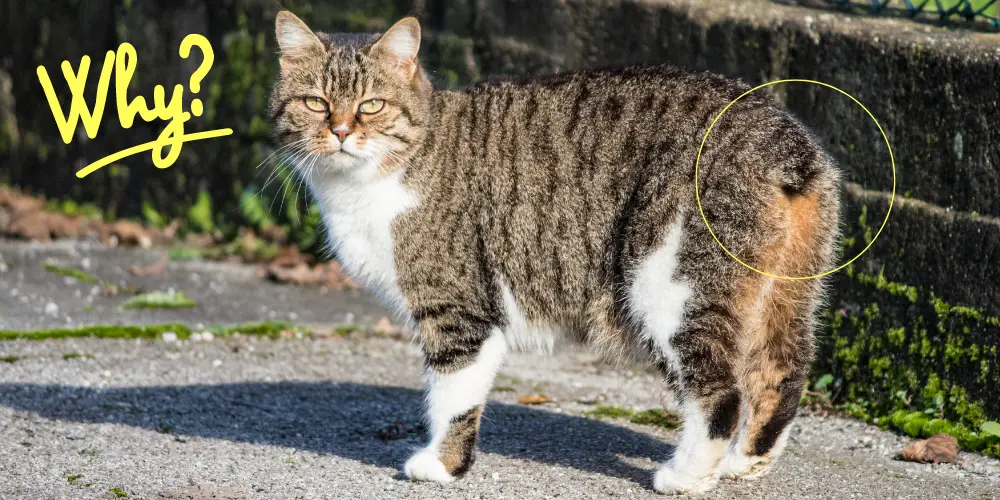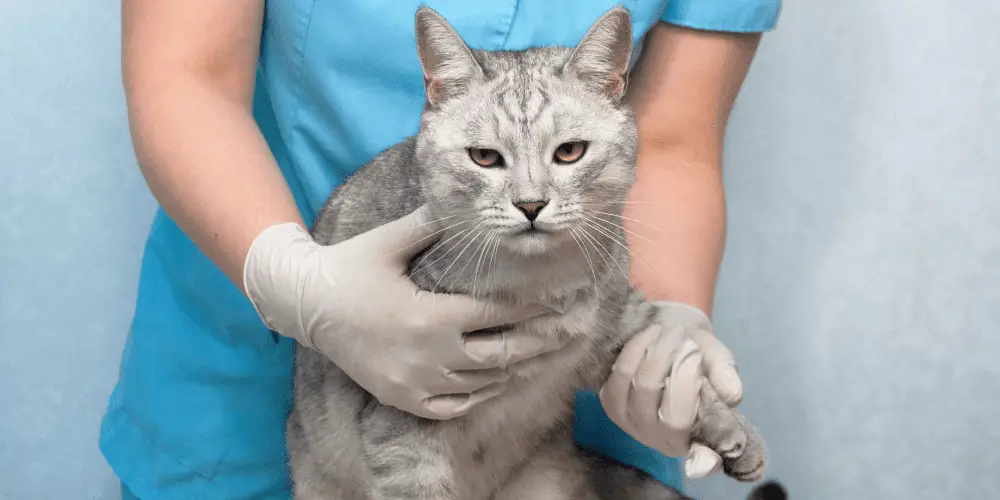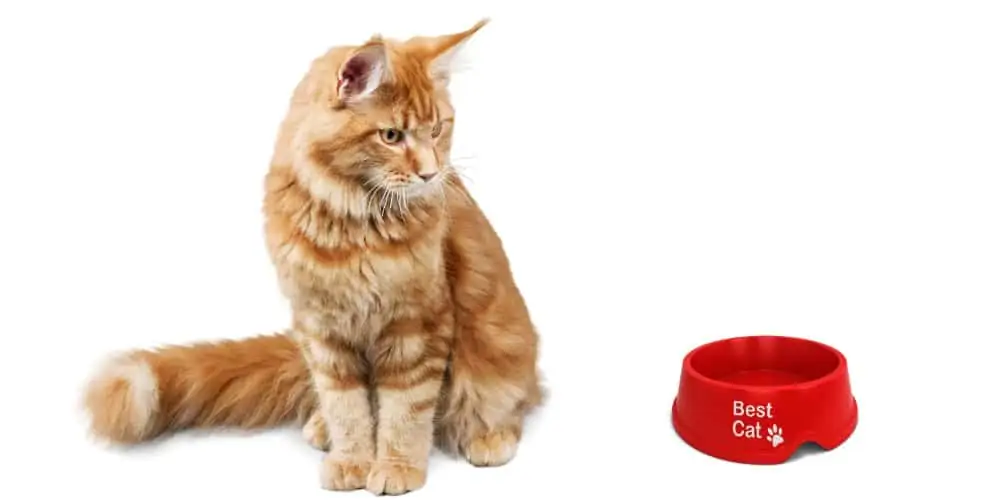Ever glanced at your feline friend and wondered, “Why do cats’ tails fall off?” It’s a question that has puzzled many cat lovers. The reasons behind this phenomenon can be intriguing and concerning, from myths to medical conditions.
Cats’ tails may fall off due to injuries, medical conditions, or surgical interventions. Injuries can include accidents or bites, while medical conditions might involve infections or diseases like feline hyperesthesia syndrome. Tail loss is never natural and always has an underlying cause.
In this article, we’ll explore the anatomy of a cat’s tail, debunk the myths, and uncover the real reasons why cats’ tails fall off. Join us as we unravel this tail-twisting mystery!
Key Takeaways
- Cats’ tails are complex structures, playing vital roles in balance, communication, and expression.
- Common myths about cats’ tails falling off naturally are debunked; tail loss always has an underlying cause.
- Injuries, diseases, and surgical interventions are the main medical reasons behind cats’ tails falling off.
- Cats can adapt to life without a tail, and tailless breeds like the Manx lead full, normal lives.
- Prevention and safety measures, including awareness of hazards and regular veterinary check-ups, are essential for protecting a cat’s tail.
- Misinformation, especially on social media platforms like TikTok, can lead to confusion and misconceptions about why cats’ tails fall off.
- Tailless cats may have special needs or considerations, especially in adoption scenarios.
- A cat’s tail, or lack thereof, doesn’t diminish its ability to be a loving and enriching companion.
- Community engagement, sharing experiences, and continued learning contribute to responsible and compassionate cat ownership.
The Anatomy of a Cat’s Tail
What Makes a Cat’s Tail Special?
A cat’s tail is more than just a fluffy appendage; it’s a marvel of nature, a complex structure filled with muscles, bones, and nerves. Let’s explore what makes it so special:
Structure
- Bones: A cat’s tail consists of 13 to 23 individual small bones called caudal vertebrae. These bones give the tail its flexibility.
- Muscles: Surrounding these bones are several layers of muscles that enable precise control over the tail’s movements.
- Nerves: The tail is rich in nerve endings, making it highly sensitive to touch and allowing the cat to make intricate movements.
Balance
- A Balancing Act: Cats are known for their agility and grace. The tail acts as a counterbalance during climbing and jumping, helping the cat maintain its balance.
- In Mid-Air: Even when a cat is falling, the tail can help it right itself, contributing to the famous “righting reflex.”
Communication
- Emotional Barometer: Cats use their tails to express emotions. A twitch or flick may indicate irritation, while a full-on puff might signal fear.
- Social Signals: In social interactions with other cats, the tail’s position can convey dominance, submission, or friendliness.
Cat Tail Expressions
- Happy: A tail held high often means a content and confident cat.
- Annoyed: A lashing tail is usually a sign of annoyance or anger.
- Curious: A quivering tail might indicate excitement or intense focus.
Health Indicator
- Tail Health: The condition of a cat’s tail can also be an indicator of overall health. Problems with the tail might signal underlying health issues.
Common Myths and Misconceptions
Busting the Myths
From old wives’ tales to modern internet folklore, misconceptions about why cats’ tails fall off are widespread. Let’s debunk some of these myths and set the record straight:
- Myth 1: Cats’ tails fall off as a natural shedding process.
- Fact: Cats do not shed their tails. Tail loss is always due to an underlying cause such as injury or disease.
- Myth 2: A cat’s tail can regrow like a lizard’s tail.
- Fact: Unlike some reptiles, cats cannot regrow their tails. Once lost, the tail is gone for good.
- Myth 3: Cutting a cat’s tail will make it more agile.
- Fact: A cat’s tail is essential for balance and agility. Cutting it can cause serious harm and is never advisable.
TikTok Trends and Social Media Influence
In the age of social media, misinformation can spread like wildfire. Platforms like TikTok have seen trends related to cats’ tails falling off, often portrayed humorously or without proper context.
- Viral Videos: Some videos may show cats with naturally short tails or specific breeds like the Manx, leading to confusion about why cats’ tails fall off.
- Misleading Information: Without proper research or veterinary insight, social media posts can perpetuate myths and lead to misunderstanding.
- The Importance of Fact-Checking: Always consult reliable sources or veterinary professionals for accurate information about cat tail health.
The Impact on Cat Owners
These myths and misconceptions can lead to unnecessary worry or even harmful practices among cat owners.
- Unnecessary Panic: Believing that a cat’s tail might fall off randomly can cause undue stress.
- Potential Mistreatment: Following misguided advice from unreliable sources can lead to improper care or even injury.
The Science Behind the Tail Loss
Various reasons can lead to tail loss in cats, ranging from accidents to underlying health conditions. Here’s a closer look:
Injuries and Accidents
- Common Causes: Lacerations, bites, or accidents with vehicles or machinery are frequent causes of tail injuries in cats.
- Immediate Care: If an injury occurs, prompt veterinary care is essential to prevent infection and assess the damage.
- Potential Amputation: In severe cases, amputation may be necessary for the cat’s well-being.
Diseases and Infections
- Feline Hyperesthesia Syndrome: This rare condition can cause self-mutilation, leading to tail loss.
- Infections: Bacterial or fungal infections can affect the tail, causing swelling, pain, and potential loss if untreated.
- Tumors: Cancerous growths may necessitate tail amputation as part of the treatment.
- Allergies: In some cases, allergies can cause a cat to lose its tail. These allergies can be anything from allergies to food to fleas.
Surgical Interventions
- Reasons for Tail Amputation in Cats: Sometimes, surgical removal of the tail is the best option for the cat’s overall health and comfort.
- Recovery Process: Post-surgery care includes pain management, wound care, and monitoring for any signs of complications.
Living Without a Tail
Life After Tail Loss
Cats are resilient creatures, and many adapt to life without a tail. Here’s a closer look at what life might be like for a tailless cat:
The Emotional Impact on Cats
- Behavioral Changes: Tail loss can lead to changes in a cat’s behavior, such as increased anxiety or altered movement patterns.
- Adaptation: Most cats adapt well to tail loss, but some may require additional support and understanding from their owners.
The Process of Adaptation
- Initial Adjustment: Cats may initially feel disoriented without their tails, especially if they’ve lost them suddenly due to injury or surgery.
- Learning to Balance: The tail plays a role in balance, so cats may need time to adjust their movements and regain their agility.
- Emotional Support: Providing comfort and understanding during this transition can help cats adapt more quickly.
Real-Life Examples
- Tailless Cat Breeds: Some breeds, like the Manx, are naturally tailless or have very short tails. These cats live full, normal lives without any hindrance from the lack of a tail.
- Success Stories: Many cats who lose their tails due to injury or medical conditions go on to live happy, healthy lives with the proper care and support.
Tailless Cats and Adoption
- Adoption Considerations: Tailless cats may be overlooked in shelters due to their appearance. Understanding that a missing tail doesn’t affect a cat’s ability to be a loving pet can lead to successful adoptions.
- Special Needs: Some tailless cats may have special needs or require extra attention to ensure they are comfortable and healthy.
Tailless Cats in Culture
- Myths and Legends: Tailless cats have been the subject of myths and legends in various cultures, often attributed with special powers or significance.
- Modern Perception: Today, tailless cats are often celebrated for their unique appearance and are even considered desirable in some cat-show circles.
How to Protect Your Cat’s Tail
Protecting your cat’s tail and ensuring optimal cat tail health is essential. Here’s a comprehensive guide to keeping your feline friend’s tail safe:
Prevent Injuries
- Awareness of Hazards: Identify potential dangers in your home and surroundings, such as closing doors on tails, machinery, or busy roads.
- Supervision: Keep an eye on your cat, especially in unfamiliar or potentially dangerous environments.
- Safe Spaces: Create cat-friendly spaces that minimize risks, using barriers or enclosures if needed.
Regular Check-Ups
- Monitor Tail Health: Regularly inspect your cat’s tail for signs of injury, infection, or other abnormalities.
- Veterinary Visits: Schedule regular veterinary check-ups to catch any potential issues early and ensure overall tail health.
Educate Yourself
- Understand Your Cat’s Behavior: Recognize what’s normal for your cat and be alert to any changes in tail movement or appearance.
- Learn Basic First Aid: Knowing what to do if an injury occurs can significantly affect recovery.
Considerations for Specific Breeds
- Tailless or Short-Tailed Breeds: Understand the unique needs and considerations of breeds like the Manx, which may have specific tail-related health concerns.
- Long-Haired Cats: Regular grooming can prevent matting and other issues that might affect the tail.
Environmental Safety
- Indoor vs. Outdoor: Consider the risks and benefits of allowing your cat outside, where tail injuries may be more likely.
- Safe Outdoor Enclosures: If your cat enjoys the outdoors, consider creating a secure enclosure to minimize risks.
First Aid and Veterinary Care
- Immediate Action: If a cat’s tail is injured, seeking professional veterinary care is crucial. While waiting, keep the area clean and avoid unnecessary handling.
- Veterinary Assessment: A thorough examination by a veterinarian can determine the best course of action, whether it’s medication, surgery, or other treatments.
- Long-Term Care: Ongoing care and regular check-ups ensure that the tail heals properly and that the cat adjusts to any changes.
Engage with Community and Experts
- Join Cat Owner Groups: Connecting with other cat owners can provide support, advice, and shared experiences related to tail care.
- Consult Experts: Don’t hesitate to seek professional advice from veterinarians or cat care experts if you have concerns about your cat’s tail.
Final Thoughts
As we unravel the mystery of why cats’ tails fall off, we’re reminded of the infinite wonders of the animal kingdom.
Each twitch, flick, or puff of a cat’s tail tells a story, and each story adds to our profound connection with these incredible creatures.
Let’s continue to learn, share, and celebrate the awe-inspiring array of creatures that share our world, one tail at a time.
Have a tail tale to share?
A question or insight?
We’d love to hear from you! Your experiences and knowledge contribute to a broader understanding and appreciation of our feline companions.
Together, we can ensure our cats live happy, healthy lives, tails or no tails.
FAQs
Do cat tails grow back?
Once a cat’s tail has been lost or amputated, it does not grow back. However, cats can adapt and live comfortably without their tails.
Do cats have feelings in their tails?
Cats have a lot of nerves in their tails, making them highly sensitive. They use their tails for balance and communication, indicating their emotions.
What is a cat’s tail made of?
A cat’s tail consists of bones called vertebrae, muscles, nerves, and fur. It’s an extension of the spine and plays a crucial role in balance and communication.
REFERENCES:
Feline hyperesthesia syndrome. (2023, May 21). In Wikipedia. https://en.wikipedia.org/wiki/Feline_hyperesthesia_syndrome
Gómez Álvarez, C. M., & Soler Arias, E. A. (2021). Feline hyperesthesia syndrome: Epilepsy as possible aetiology in two cats. Veterinary Record Case Reports, 9(3), e132. https://doi.org/10.1002/vrc2.132


